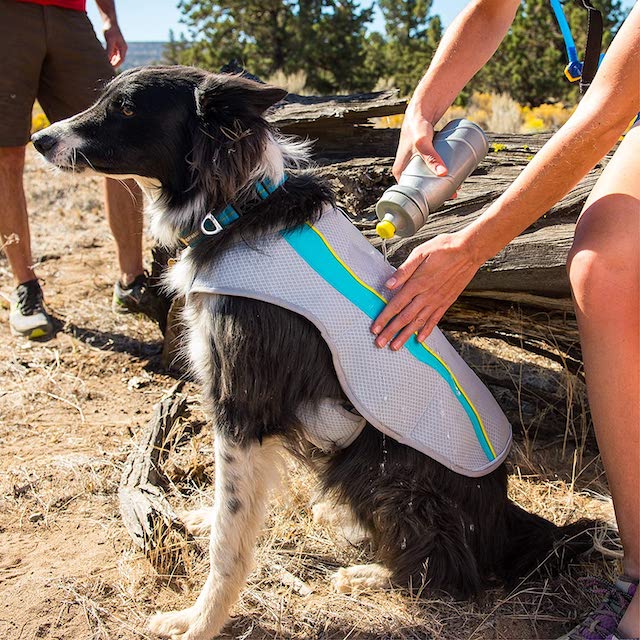Hypertonicity and Episodic Falling in Dogs: How to Identify, Treat and Manage the Condition
Hypertonicity or Episodic Falling, also known as Hyperkinesis, Falling Cavaliers, Collapsing Cavalier Syndrome, Scotty Cramp or Paroxysmal Hypertonicity Disorder, is characterized by episodic, paroxysmal attacks during which affected animals fall, exhibit muscle rigidity and may be acutely and dramatically incapacitated. Dogs do not lose consciousness and are clinically normal between attacks. Episodes appear to be triggered by stress, apprehension, and excitement, where affected animals develop a peculiar bounding, pelvic limb gait in which the limbs may be abducted and appear stiff.
Episodic Falling is a syndrome of muscle stiffness and collapse, with the pathophysiology considered to involve abnormal neurotransmitter function. However, microscopic changes are often not observed within the central nervous system.
Age at onset: Dogs typically present with symptoms between 3 and 7 months of age. Puppies as young as 12 weeks of age have shown symptoms; episodes present throughout an affected dog’s lifespan.
Most common breeds affected are:
- Bichon Frise
- Border Terrier
- Boxer
- Cavalier King Charles Spaniel
- Jack Russell Terrier
- Norwich Terrier
- Scottish Terrier
- Springer Spaniel
- Wheaton Terrier
- Yorkshire Terrier
Overview
The primary symptom of the condition is that the dogs collapse without loss of consciousness and display limb rigidity.
Genetics of Episodic Falling: Research studies indicate that Episodic Falling is an inherited trait in the Cavalier King Charles Spaniel breed. Genetic mutations linked to both Episodic Falling and Dry eye and curly coat syndrome (known as congenital keratoconjunctivitis sicca and ichthyosiform dermatosis) have been identified. This lead to the development of DNA tests to identify carriers. These DNA tests were made available in April 2011 from the UK’s Animal Health Trust.
Episodic Falling in Humans: It has been suggested that this disorder has some similarities to hyperexplexia (startle disease) in people, a hereditary (autosomal dominant) pathological exaggeration of the normal startle response to auditory, somesthetic or visual stimuli which sometimes results in falling.
Please note: this article was originally written in 2011. There may be newer diagnosis and treatment options currently available. Please consult with your veterinarian. This article is for information purposes only and is not intended, nor should it be used, as a substitute for the professional medical advice of your veterinarian.
Symptoms
The symptoms associated with Hypertonicity or Episodic Falling, also known as Hyperkinesis, Falling Cavaliers, Collapsing Cavalier Syndrome, Scotty Cramp or Paroxysmal Hypertonicity Disorder are often confused with epileptic seizures. However, Hypertonicity/Episodic Falling can be distinguished by the fact that dogs remain conscious through the event.
Hypertonicity/Episodic Falling episodes appear to be triggered by stress, apprehension, excitement and variable periods of exercise. During episodes, affected dogs display increased muscle tone and an inability to relax their muscles.
Dogs with Hypertonicity/Episodic Falling may show an array of symptoms with varying degrees and frequencies. The aging process also affects dogs individually, so dogs with this disorder may have fewer, more or no change in the frequency/severity of episodes as the dog ages. After episodes, dogs with mild symptoms usually continue as if nothing has happened.
The following is a list of reported symptoms of Hypertonicity/Episodic Falling:
- cramps
- spasms
- odd events or quirks
- tumbling or freezing episodes
- falls followed by failed attempts to rise
- peculiar bounding, pelvic limb gait
- limb abduction and stiffness
- bunny-hopping gait
- arching of the spine
- vocalization
- collapse
- “deer-stalking” posture, with increasing limb stiffness, falling, and legs held in extensor rigidity recovery within 10 mins to 2 hours; residual effects may last up to several hours
- intense face rubbing may precede an episode
- thoracic and pelvic limb extensor rigidity followed by collapse into lateral recumbency
- may observe undulating muscle movements that induce a rippling effect of the overlying skin
- freezing or walking with the head down and to one side.
- stiffness in the back legs
- an apparent lack of coordination in the rear or front limbs
- temporary loss of control in the hind legs
- rolling or somersaulting
- laying on one side with the back legs extended, limbs may twitch
- drooling
- tightening of the muscles around the mouth with an inability to open the jaws
- eyes may appear to bulge as the muscles of the face contract.
With severe cases of this disorder, symptoms are chronic and may be induced without any apparent causes. After a severe episode, some panting may occur and the dog may rest. Some puppies become frightened and take some time to calm down. Most get used to the events with age.
Severe cases of Hypertonicity/Episodic Falling are characterized by:
- the front legs curling up over the head
- rear legs become rigid through the toes
- jaws are clenched
- episodes can last for hours
- multiple episodes can happen in a short space of time
- may develop hyperthermia
- respiration may be impaired
- chronic tenderness and stiffness
The following videos demonstrate some of the symptoms of Episodic Falling in Cavalier King Charles Spaniels. We gratefully acknowledge Karen and her little Bentley, and Dorothie Hellman, who runs the Cavalier Episodic Falling website, for producing these excellent videos.
This first video of Karen’s Bentley clearly shows that Bentley is conscious throughout his episode, distinguishing this disorder from an epileptic seizure.
https://youtu.be/LTuKF2DeJ4I
The following videos are provided by Dorothie and show dogs further displaying symptoms.
Treatment Options
Dogs affected with Hypertonicity or Episodic Falling, also known as Hyperkinesis, Falling Cavaliers, Collapsing Cavalier Syndrome, Scotty Cramp or Paroxysmal Hypertonicity Disorder can be treated medically to mediate the severity and frequency of disease symptoms. Although the disorder is rarely fatal, a correct diagnosis is important because severe, extended episodes can be treated effectively by veterinarians. There are no definitive tests to diagnose this disorder; typically the combination of symptoms, the presence of trigger signals, and the fact that dogs remain conscious during the episodes enable correct diagnosis. Videos of episodes are essential to helping veterinarians view episodes that they may not experience during appointments.
Note: Treatment options for this condition may have advanced since this article was first written. Please consult with your veterinarian for the latest available treatment options.
Several pharmaceutical products are typically used to treat Hypertonicity/Episodic Falling patients. These include clonazepam, diazepam and acetazolamide. These drugs are not approved for use in animals by the Food and Drug Administration (FDA) but may be legally prescribed by veterinarians as off-label drugs. Therefore, the safety and efficacy of the use ofclonazepam, diazepam and acetazolamide to treat Hypertonicity/Episodic Falling dogs is not well understood.
Clonazepam: The benzodiazepine drug clonazepam (also known as Klonopin®) enhances GABA neurotransmission and may provide a greater clinical improvement compared with diazepam. In one trial, clonazepam (at 0.5 mg/kg tid) resulted in almost complete remission of signs over a 2-year period.
Risks: While generally safe and effective when prescribed by a veterinarian, clonazepam may cause side effects in some animals. In some animals, clonazepam may cause paradoxical reactions, including hyperactivity and aggression. Increased salivation may occur in some patients and may be problematic, particularly in dog breeds already prone to hypersalivation. Long-term treatment with clonazepam may lead to physical dependence and thus undesirable behavioral changes if the drug is discontinued abruptly. For this reason the dose should be tapered off over several weeks at the conclusion of treatment.
Diazepam: Diazepam (Valium®) is a benzodiazepine tranquilizer and can be used as a sedative either alone or in combination with other drugs. Research studies have reported that dogs affected wtih Hypertonicity/Episodic Falling experience slight, temporary improvement following diazepam treatment.
Risks: While generally safe and effective when prescribed by a veterinarian, diazepam can cause side effects in some animals. Diazepam can cause sedation and disorientation in animals; they may become uncoordinated and weak.Diazepam should not be administered to animals long-term without discussing the potential for side effects with your veterinarian. Long-term treatment also can lead to dependence that could bring undesirable behavior changes once the drug is discontinued. Diazepam is a controlled drug because it has high abuse potential in people. This drug, if prescribed for animals, should be carefully monitored and kept in a secure location.
Caution should be exercised if cats share the household with diazepam-treated dogs, as diazepam in small doses has been shown to increase appetite and alter behavioral problems such as urine spraying or aggression. Diazepam can also cause severe, fatal liver problems in cats.
Acetazolamide: (Diamox®, Dazamide®) is a non-bacteriostatic sulfonamide drug that is further categorized as a carbonic anhydrase inhibitor. Acetazolamide’s onset of action may be as early as 30 minutes after an oral dose. Its maximum effects occur in about 5 hours and its duration of its action is about 7 hours. It is excreted unchanged in the urine.
Risks: Possible side effects include: seizures, drowsiness, ataxia, tremor, urticaria/pruritus, rash, photosensitivity, vomiting, diarrhea, bone marrow depression, hematuria, renal calculi, crystalluria, polyuria, phosphaturia, weight loss, electrolyte imbalance, and hepatic insufficiency.
Management
Special care can be given to dogs with Hypertonicity/Episodic Falling, also known as Hyperkinesis, Falling Cavaliers, Collapsing Cavalier Syndrome, Scotty Cramp or Paroxysmal Hypertonicity Disorder to minimize the severity and decrease the frequency of episodes. Typically, affected dogs will recover without treatment within 10-60 minutes, although stiffness may last for hours. Anecdotal evidence suggests that lifestyle changes to remove known stressors and supplement diet may help considerably. In addition, acupuncture may also be effective for some dogs.
Managing Episodes
During episodes, it is important to stay calm and to keep the dog calm, as fear, and anxiety can add to the stress of the situation and may prolong or increase symptoms. Try to comfort the dog by holding it gently and do not force the dog’s legs to assume any position. Keep the dog as cool as possible, and allow it to rest as much as it wishes after the episode.
If your dog has an extended episode or frequent severe episodes, contact your veterinarian immediately.
Lifestyle Changes
Water: Over-heating may trigger episodes. Therefore, it is important to carry or have access to water at all times.
Removal of environmental stressors: Careful attention must be paid to identify and minimize triggers that initiate episodes, including stressors, excessive play and owner behaviors.
Diet: Reports suggest that affected dogs respond to dietary changes. Notably, Vitamin E has been linked to a reduced frequency of hyperkinetic episodes in dogs with Scotty Cramp. Vitamin E is a potent antioxidant and a supplement of approximately 100 IU per day (please check with your vet before commencing any vitamin treatment to ensure you have an accurate and affective dose) has been recommended.
Cooling Devices: Dogs may overheat during episodes. This can be due to exertion combined with the inability to pant because the jaws are clenched. Canine coolers such as cooling beds, cooling mats and cooling vests have all been used to moderate temperatures during and after episodes. In addition to cooling devices, submerging an affected dog’s feet in cold water will help.
A canine cooler mat/pad can serve to keep dogs cool at home.


A cooling vest keeps dogs cool while out and about.


A portable water bottle with an easy-access bowl is small enough to carry comfortably, but large enough to keep a dog hydrated is also useful.
Acupuncture: Acupuncture is an ancient procedure used in traditional Chinese medicine for the treatment of whole-body conditions. Small-gauge needles are applied to various points on the body for the purpose of eliciting physiological responses in the treatment of almost any disease or condition, particularly for relieving pain.
Acupuncture has been successful in treating arthritis in both humans and canines. One study found that acupuncture enhanced the efficacy of antibiotic treatment for canine otitis crises. Favorable acupuncture results have been reported in the treatment of many other canine conditions, including the following:
- cardiovascular disorders
- chronic respiratory conditions
- dermatological disorders
- gastrointestinal disorders
- gynecological disorders
- immune-mediated disorders
- male reproductive disorders
- musculoskeletal disorders
- neurological disorders
- reproductive disorders
- thoracolumbar and cervical disc disease
Risks: Acupuncture may not be effective or should not be used in several situations:
- extremely anxious pets sometimes can be so excitable that the release of their own adrenaline counteracts acupuncture’s benefits
- certain medications, such as corticosteroids, can decrease the effectiveness of acupuncture
- cancer; selecting the wrong points can actually accelerate the cancer growth






